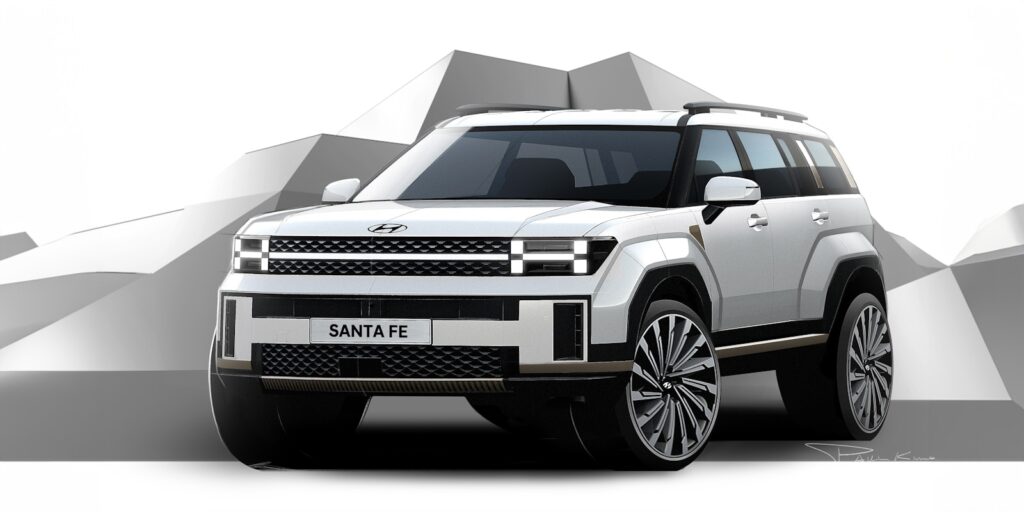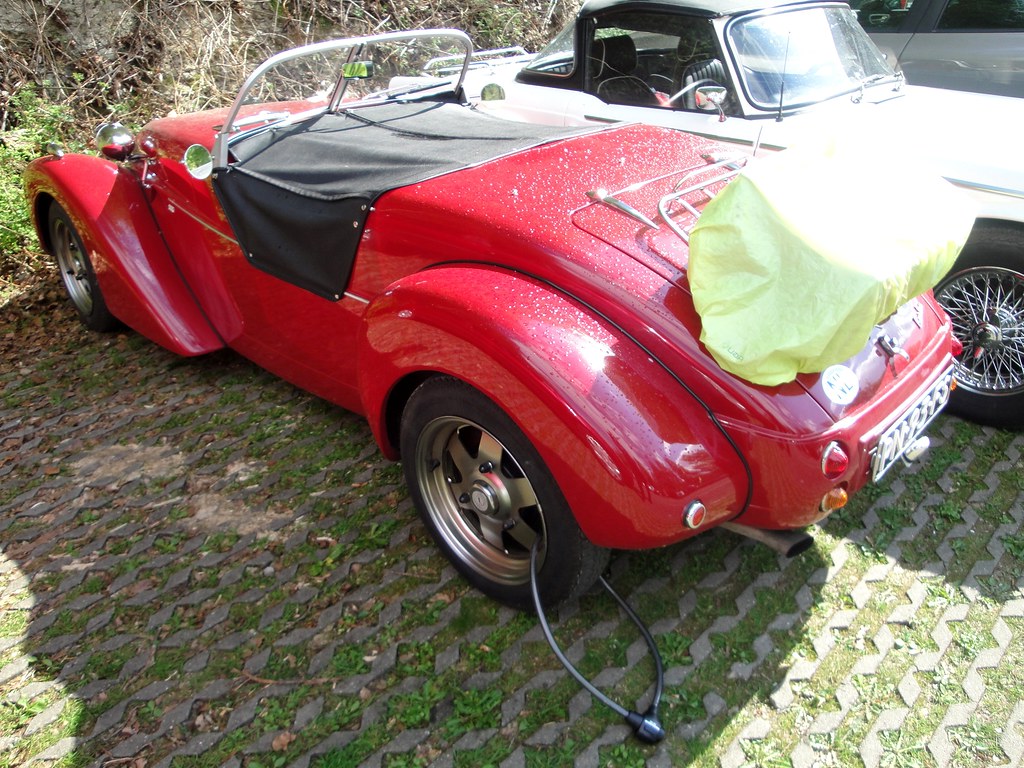
The world of automotive appreciation often finds itself at a fascinating crossroads, particularly when comparing the nostalgic sentiments of Baby Boomers with the practical and environmentally conscious perspectives of Millennials. For older enthusiasts, classic cars from the 1960s, 70s, and 80s evoke powerful memories of a bygone era—a time of bold design, unbridled power, and a distinctly American approach to luxury. These vehicles, often celebrated as icons, represent tangible pieces of history, embodying the societal values and technological aspirations of their production years.
However, as generations evolve, so do the criteria for what constitutes a desirable vehicle. What one generation views as a symbol of freedom or innovation, another might see as an outdated relic, fraught with inefficiencies, safety concerns, or simply a lack of modern appeal. The automotive landscape has shifted dramatically, now emphasizing fuel economy, advanced safety features, sophisticated technology, and a more refined driving experience.
This stark difference in priorities has created a significant generational gap in what’s considered a “cool ride.” Many once-revered Boomer classics now struggle to capture the imagination of younger car enthusiasts. In this deep dive, we’ll explore 12 such vehicles, dissecting the hidden factors behind this disinterest and revealing the evolving narrative of automotive culture and how practicality, aesthetics, and values shape our perception of cars.
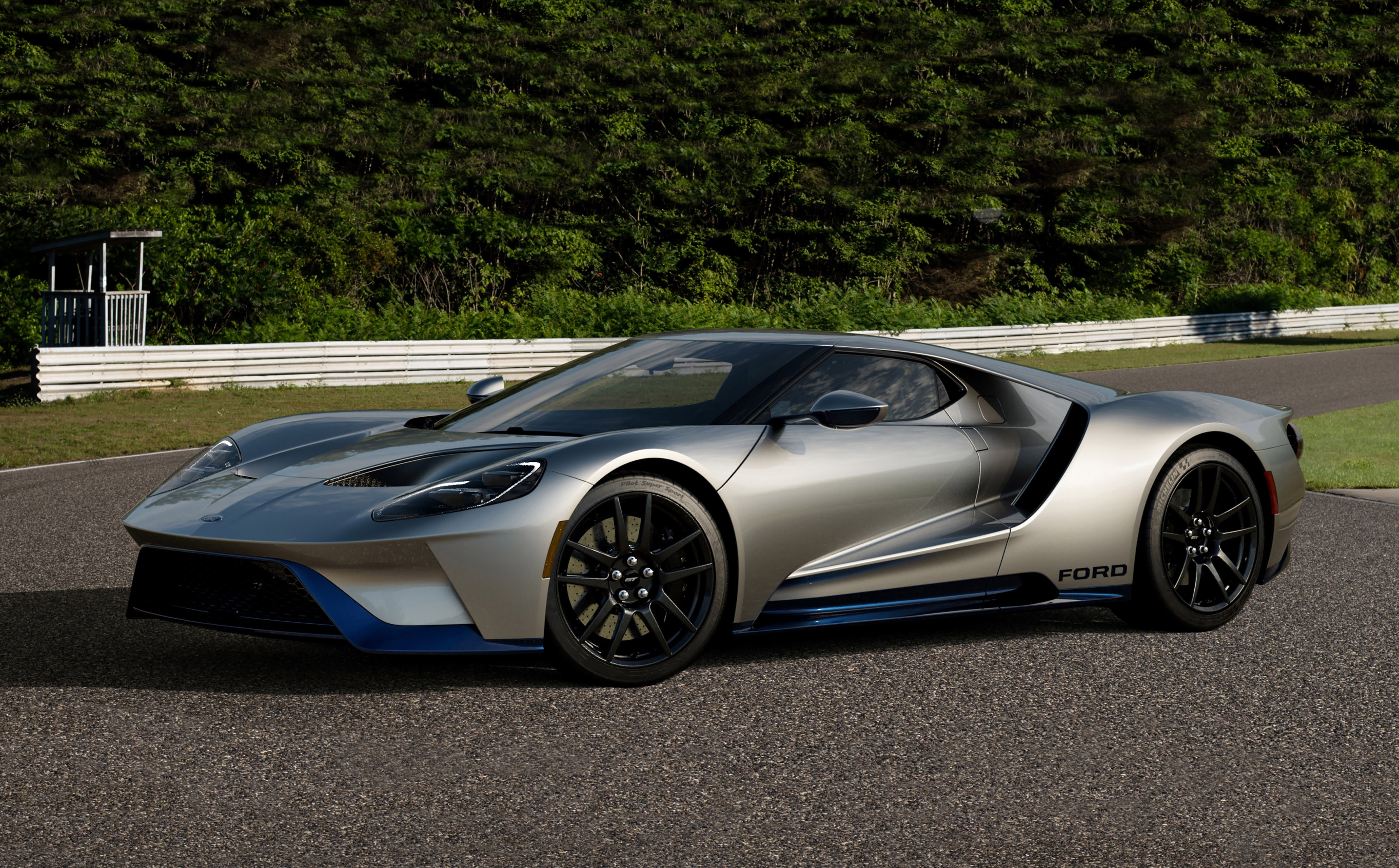
1. **Ford Mustang II: A Divisive Legacy** For many Baby Boomers, the Ford Mustang II holds a particular place in their automotive memories, representing Ford’s pragmatic response to the fuel crisis era. It was an attempt to keep the iconic Mustang lineage alive by offering a smaller, more economical package. Boomers might recall its practicality and its role in ensuring the Mustang nameplate continued through challenging times, viewing it as a necessary evolution rather than a complete departure from the brand’s spirit. It adapted to new economic realities, a sensible choice then.
Millennials, however, are far less forgiving, largely criticizing the Mustang II for straying too far from the original’s muscle car roots. Its underwhelming performance, especially compared to its powerful predecessors, and a design often deemed bland and uninspired, makes it a difficult sell. Built on the Pinto platform, it failed to deliver the thrilling driving experience and aggressive aesthetic that defined earlier Mustangs, leaving younger enthusiasts with disappointment rather than nostalgia for an automotive icon.
Ultimately, the Mustang II serves as a poignant example of how historical context influences perception. While a pragmatic solution for its time, celebrated by some Boomers for its survival against the odds, Millennials primarily view it as a dilution of a legend. They see a car prioritizing sensibility over the passion and performance that originally made the Mustang an automotive titan, firmly establishing it as a classic Boomer car Millennials actively avoid.
Car Model Information: 2021 Jeep Grand Cherokee Laredo X
Name: Second generation
Caption: Ford Mustang II coupe
Aka: Ford Mustang II , Ford T5 (in Germany)
Class: Pony car,Subcompact car
Production: 1973–1978
ModelYears: 1974–1978
Predecessor: Ford Mustang (first generation)
Successor: Ford Mustang (third generation)
Assembly: Unbulleted list
Layout: Front-engine, rear-wheel-drive layout
BodyStyle: coupé,hatchback
Related: Ford Pinto,Ford Pinto
Manufacturer: Ford Motor Company
Engine: ubl
Transmission: ubl
Wheelbase: cvt
Length: cvt
Width: cvt
Height: cvt
Designer: Buck Mook, Dick Nesbitt
Categories: All articles with dead external links, All articles with unsourced statements, Articles with dead external links from April 2024, Articles with permanently dead external links, Articles with short description
Summary: The second-generation Ford Mustang, marketed as the Ford Mustang II, is a two- or three-door, four-passenger, front-engine/rear-drive pony car manufactured and marketed by Ford from 1973 until 1978. Introduced in September 1973 for the 1974 model year, the Mustang II arrived roughly coincident with the oil embargo of 1973 and subsequent fuel shortages. Developed under Lee Iacocca, it was an “entirely new kind of pony car.” Ford “decided to call it Mustang II, since it was a new type of pony car designed for an era of high gas prices and fuel shortages.”
The Mustang II was 490 lb (222 kg) lighter and almost 19 in (483 mm) shorter than the 1973 Mustang, and derived from the subcompact Pinto platform. While sharing a limited number of driveline components with the Pinto, the Mustang II employed an exclusive subframe, isolating its front suspension and engine mount subframe. The steering used a rack-and-pinion design.
Named Motor Trend’s 1974 Car of the Year and reaching over 1.1 million sales over four years of production, the Mustang II is noted simultaneously for both its marketing prescience and strong sales – while criticized as having abandoned essential aspects of the Mustang heritage and described, in a retrospective after 40 years since its introduction, as embodying the Malaise era.
Get more information about: Ford Mustang (second generation)
Buying a high-performing used car >>>
Brand: Ford Model: Mustang II
Price: $27,316 Mileage: 34,523 mi.

2. **Cadillac Seville: An Emblem of Excess** The Cadillac Seville occupies a significant space in the memories of many Baby Boomers, symbolizing an era when American luxury sedans epitomized comfort and style. Introduced in the mid-1970s, it represented Cadillac’s effort to offer a more compact, yet still opulent, package to compete with European luxury cars. Boomers fondly recall the Seville as a premium American sedan that delivered a plush ride, generous interior space, and a dignified presence, cementing its status as a symbol of aspirational success.
However, for Millennials, the Cadillac Seville often embodies the excesses of past American automotive design. Its substantial size, while offering comfort, clashes sharply with contemporary values favoring smaller, more agile, and environmentally conscious vehicles. The Seville’s inherent fuel inefficiency, a product of an era less concerned with stringent emissions and high fuel costs, is a major point of contention for a generation focused on sustainability and practical cost-effectiveness in their daily drivers.
The Seville’s aesthetic also contributes to its dismissal; what Boomers might appreciate as classic grandeur, Millennials often find dated and overly ornate. This disconnect in design preference, combined with practical drawbacks like poor fuel economy and challenging maneuverability in urban environments, ensures the Seville remains largely undesirable. It stands as a testament to how shifting cultural priorities can transform a celebrated luxury icon into a vehicle primarily relegated to historical appreciation for younger generations.
Car Model Information: 1999 Cadillac Seville Base
Name: Cadillac Seville
Caption: 1998–2004 Cadillac Seville
Manufacturer: Cadillac
Production: 1975–2003
ModelYears: 1976–2004
Class: luxury car
Layout: FR layout
Predecessor: Cadillac Calais
Successor: Cadillac STS
Categories: 1980s cars, 1990s cars, All articles with unsourced statements, Articles with short description, Articles with unsourced statements from October 2016
Summary: The Cadillac Seville is a mid-size luxury car manufactured by Cadillac from the 1976 to 2004 model years as a smaller-sized, premium model. It was replaced by the STS in 2004 for the 2005 model year.
Get more information about: Cadillac Seville
Buying a high-performing used car >>>
Brand: Cadillac Model: Seville
Price: $19,900 Mileage: 36,875 mi.

3. **Chevrolet Corvair: Innovation Met with Controversy** For many Baby Boomers, the Chevrolet Corvair represented a bold, innovative departure from conventional American automotive design, captivating them with its unique engineering. Its rear-mounted, air-cooled engine and sleek, European-inspired aesthetic were a significant risk for General Motors, offering a compact and nimble alternative to the era’s large-bodied, front-engine cars. The Corvair was initially celebrated for its forward-thinking approach, embodying a spirit of distinctiveness and engineering ambition in its class.
Despite its innovative spirit, the Corvair’s legacy is unfortunately overshadowed by controversy, primarily concerning its handling characteristics and safety. Millennials, who have grown up with stringent safety standards and advanced vehicle dynamics, often associate the Corvair more with its problematic reputation than its unique design. The early models’ swing-axle rear suspension, which could lead to unpredictable oversteer, contributed to its image as a vehicle with inherent safety concerns.
Consequently, the Chevrolet Corvair remains largely unloved by younger enthusiasts. The historical handling issues and safety concerns, whether fully understood or simply absorbed through cultural osmosis, have effectively overshadowed its innovative aspects. It serves as a stark reminder that even groundbreaking design, if compromised by fundamental safety or reliability shortcomings, can struggle to find lasting appeal across generations, particularly among those who prioritize modern driving assurance.
Car Model Information: 1964 Chevrolet Corvair Monza
Caption: 1964 Chevrolet Corvair Monza
Name: Chevrolet Corvair
Manufacturer: Chevrolet
Production: 1960–1969
Platform: GM Z platform
Chassis: Unibody
ModelYears: 1960–1969
Assembly: United States,Kansas City, Missouri,Oakland, California,Van Nuys,St. Louis,Flint, Michigan,Belgium,Canada,Mexico,South Africa,Switzerland,Venezuela
Class: Compact car
Successor: Chevrolet Vega
Layout: Rear-engine, rear-wheel-drive layout
Categories: All Wikipedia articles written in American English, All articles lacking in-text citations, All articles needing additional references, All articles with dead external links, All articles with specifically marked weasel-worded phrases
Summary: The Chevrolet Corvair is a rear-engined, air-cooled compact car manufactured and marketed by Chevrolet over two generations between 1960 and 1969. The Corvair was a response to the increasing popularity of small, fuel-efficient automobiles, particularly the imported Volkswagen Beetle and the success of American-built compacts like the Rambler American and Studebaker Lark.
The first generation (1960–1964) was offered as a four-door sedan, two-door coupe, convertible, and four-door station wagon. A two- and four-door hardtop and a convertible were available second generation (1965–1969) variants. The Corvair platform was also offered as a subseries known as the Corvair 95 (1961–1965), which consisted of a passenger van, commercial van, and pickup truck variant. Total production was approximately 1.8 million vehicles from 1960 until 1969.
The name “Corvair” was first applied in 1954 to a Corvette-based concept with a hardtop fastback-styled roof, part of the Motorama traveling exhibition. When applied to the production models, the “air” part referenced the engine’s cooling system.
A prominent aspect of the Corvair’s legacy derives from controversy surrounding its handling, articulated aggressively by Ralph Nader’s Unsafe at Any Speed and tempered by a 1972 Texas A&M University safety commission report for the National Highway Traffic Safety Administration (NHTSA) which found that the 1960–1963 Corvair possessed no greater potential for loss of control in extreme situations than contemporary compacts.
To better counter popular inexpensive subcompact competitors, notably the Beetle and Japanese imports such as the Datsun 510, GM replaced the Corvair with the more conventional Chevrolet Vega in 1970.
Get more information about: Chevrolet Corvair
Buying a high-performing used car >>>
Brand: Chevrolet Model: Corvair
Price: $29,988 Mileage: 74,787 mi.
Read more about: More Than Just a Chassis: Uncovering 11 Catastrophic Design Flaws That Defined Automotive Infamy
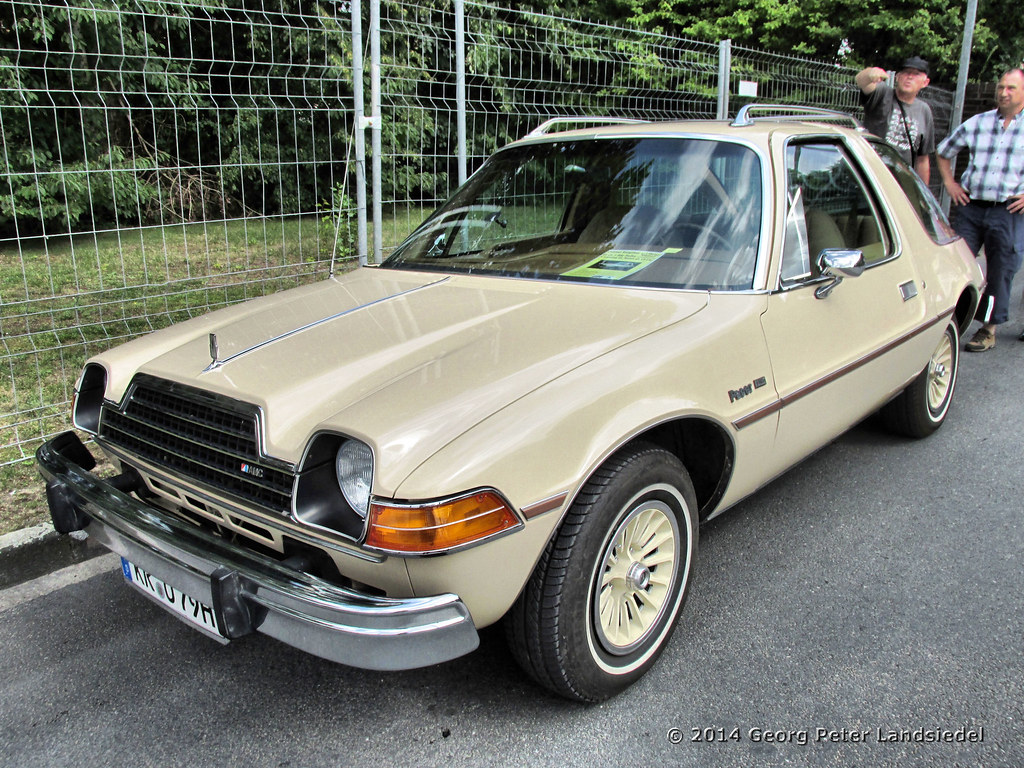
4. **AMC Pacer: A “Bubble” of Ambition** The AMC Pacer represents a truly unconventional chapter in 1970s American automotive design. For Baby Boomers, particularly those who valued innovation and a departure from the norm, the Pacer was initially touted for its unique styling and audacious attempt to redefine the compact car. Its wide body, extensive glass area, and distinctive “bubble-like” appearance were aimed at offering unparalleled interior spaciousness and visibility, making it a curious object of fascination for those seeking originality on the road.
However, this very distinctiveness is precisely what alienates Millennials. Younger generations frequently regard the Pacer as oddly shaped and aesthetically perplexing, often making fun of its truly unique, almost cartoonish, appearance. What Boomers might have seen as bold, Millennials often interpret as ungainly and disproportionate. The Pacer’s attempt at breaking the mold is now largely viewed as a significant misstep in design, positioning it as a historical oddity rather than a desirable classic for today’s market.
Beyond its polarizing looks, the Pacer also suffers from perceptions of inefficiency, a critical drawback for Millennials who prioritize fuel economy. Its bulbous form and often lackluster powertrain options fail to align with modern preferences for sleek, efficient vehicles. The Pacer’s legacy, therefore, is a clear illustration of how design philosophies can dramatically age, transforming what was once a daring individualist into a symbol of questionable taste and design folly for younger generations.
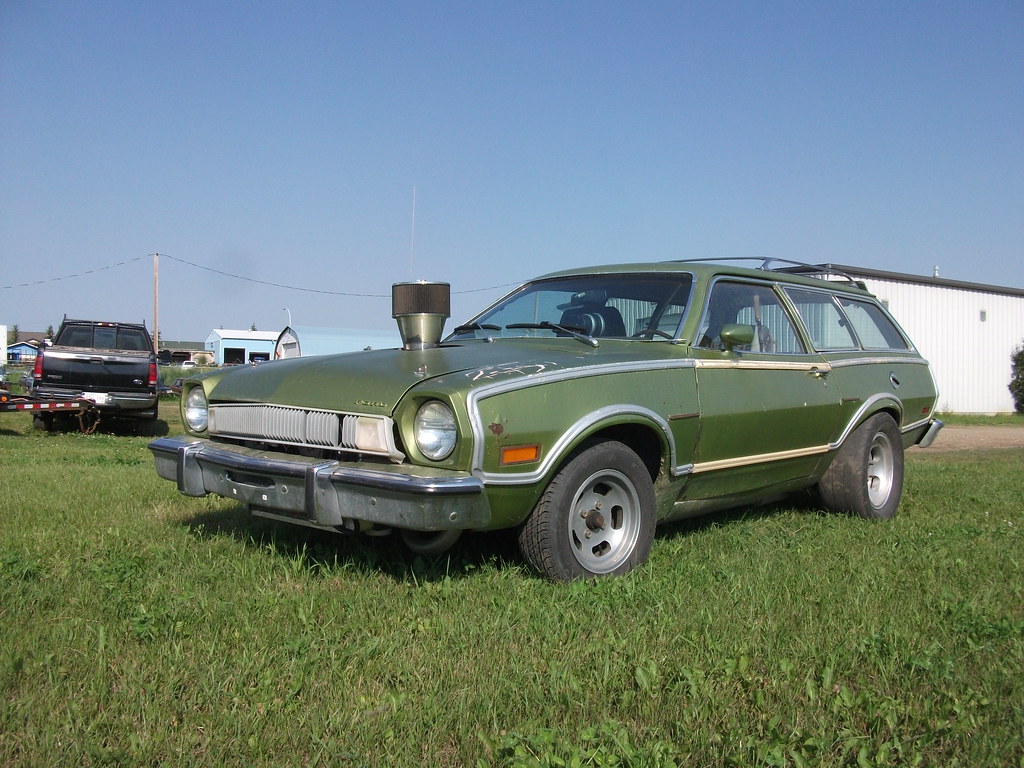
5. **Ford Pinto: The Shadow of Safety Concerns** For many Baby Boomers, the Ford Pinto resonated as an affordable, compact, and practical car during the 1970s, fulfilling a genuine need for economical transportation. Boomers might reminisce about its low purchase price and its role as a reliable starter or secondary family vehicle, appreciating its straightforward utility at the time. It was a mass-market car designed to be accessible and efficient, a common sight on American roads that served a clear purpose.
However, the enduring legacy of the Ford Pinto is tragically linked to its severe safety issues, making it an immediate red flag for Millennials. Younger generations almost exclusively associate the Pinto with the notorious risk of its fuel tank catching fire upon rear impact. This critical design flaw, widely publicized and the subject of major legal battles and recalls, casts a long and dark shadow over any potential nostalgic appeal the car might otherwise have possessed, negating its original intent.
The gravity of these safety concerns is a primary driver of Millennial disinterest. Having grown up with stringent modern safety standards, the idea of a car with a fundamental, life-threatening design flaw is simply unacceptable. This historical stigma, coupled with readily available information about the company’s knowledge of the defect, profoundly impacts their perception, ensuring the Pinto remains one of the classic Boomer cars that younger generations consistently and vehemently avoid, prioritizing safety above all else.
Car Model Information: 1978 Ford Pinto RUNABOUT HATCHBACK
Name: Ford Pinto
Caption: Ford Pinto
Manufacturer: Ford Motor Company
Aka: Mercury Bobcat
Production: September 1970 – July 1980
ModelYears: 1971–1980 (Pinto),1974–1980 (Bobcat)
Assembly: Edison, New Jersey,Milpitas, California
Designer: Robert Eidschun (1968)
Class: Subcompact car
BodyStyle: Sedan (automobile),sedan delivery,station wagon,hatchback
Related: #Mercury Bobcat (1974–1980),Ford Mustang (second generation)
Layout: Front-engine, rear-wheel-drive layout
Chassis: Unibody
Engine: unbulleted list
Abbr: on
Disp: Ford Cologne engine
Transmission: unbulleted list
Wheelbase: 94.0 in
Length: 163 in
Width: 69.4 in
Height: 50 in
Weight: convert
Predecessor: Ford Cortina#Mark II (1966–1970)
Successor: Ford Escort (North America)
Categories: 1980s cars, Articles with short description, Cars discontinued in 1980, Cars introduced in 1970, Commons category link from Wikidata
Summary: The Ford Pinto is a subcompact car that was manufactured and marketed by Ford Motor Company in North America from 1970 until 1980. The Pinto was the first subcompact vehicle produced by Ford in North America.
The Pinto was marketed in three body styles throughout its production: a two-door fastback sedan with a trunk, a three-door hatchback, and a two-door station wagon. Mercury offered rebadged versions of the Pinto as the Mercury Bobcat from 1975 until 1980 (1974–1980 in Canada). Over three million Pintos were produced over its ten-year production run, outproducing the combined totals of its domestic rivals, the Chevrolet Vega and the AMC Gremlin. The Pinto and Mercury Bobcat were produced at Edison Assembly in Edison, New Jersey, St. Thomas Assembly in Southwold, Ontario, and San Jose Assembly in Milpitas, California.
Since the 1970s, the safety reputation of the Pinto has generated controversy. Its fuel-tank design attracted both media and government scrutiny after several deadly fires occurred when the tanks ruptured in rear-end collisions. A subsequent analysis of the overall safety of the Pinto suggested it was comparable to other 1970s subcompact cars. The safety issues surrounding the Pinto and the subsequent response by Ford have been cited widely as business ethics and tort reform case studies.
Get more information about: Ford Pinto
Buying a high-performing used car >>>
Brand: Ford Model: Pinto
Price: $19,000 Mileage: 91,000 mi.
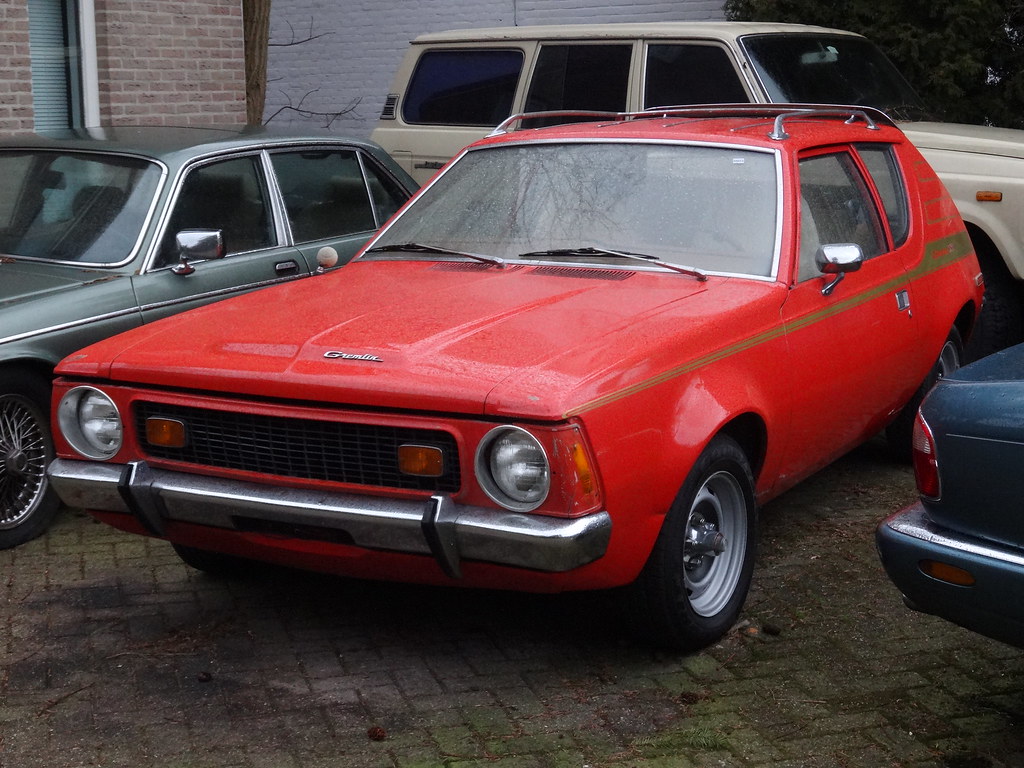
6. **AMC Gremlin: Unconventional Aesthetics and Performance** The AMC Gremlin is another classic Boomer car that vividly illustrates the generational divide in automotive taste. For many Baby Boomers, its unique design evokes a certain nostalgia, a reminder of an era when American Motors Corporation dared to experiment with unconventional styling. The Gremlin, with its distinctive truncated rear, was an attempt at creating a compact, economical, and sporty subcompact, and its quirky individuality was part of its charm for those who embraced its difference on the road.
However, for Millennials, the Gremlin’s unusual aesthetics are often a major deterrent. Younger generations tend to dislike its highly distinctive and, to their eyes, awkward appearance. What Boomers might remember as bold or unique, Millennials often perceive as simply ungainly or poorly proportioned. The chop-off rear end and overall silhouette, which aimed to be distinctive, now often elicit amusement or bewilderment, making it a challenging car to appreciate for its visual appeal in a contemporary context.
Beyond its polarizing looks, the AMC Gremlin also suffered from less-than-stellar performance metrics. While intended to be an economical option, its engine choices rarely provided exciting power or engaging driving dynamics. This lack of respectable performance further diminishes its appeal, making it difficult for younger enthusiasts to see past its aesthetic quirks. The Gremlin, despite its distinctiveness, ultimately fails to capture the imagination or meet the practical and aesthetic demands of a younger generation, firmly placing it on the list of avoided classics.
Read more about: From Punchlines to Legends: These Weird Classic Cars Should Never Have Been Cool, But Totally Are!

7. **Dodge Coronet: Simplicity Lost in Grandeur**For many Baby Boomers, the Dodge Coronet embodied a straightforward, reliable, and solid family car, a dependable workhorse that served its purpose without much fuss or pretense. It was a vehicle that simply got the job done, offering a sense of security and practicality for everyday life. In an era where automotive choices often reflected societal roles, the Coronet was a sensible, unpretentious option that resonated with a generation valuing reliability above ostentation. Its presence was widespread, a familiar sight on suburban streets and highways alike, a testament to its everyday utility and accessibility.
However, Millennials approach the Coronet through a different lens, often dismissing it for a design they perceive as plain and uninspired. In their quest for vehicles that offer either distinctive styling, engaging performance, or cutting-edge technology, the Coronet’s traditional aesthetic often falls short. Its large size, while offering ample interior space, is also a significant drawback for a generation that prioritizes agility, ease of parking in increasingly congested urban environments, and a smaller environmental footprint. The sheer physical presence of the Coronet, once a hallmark of American family cars, now appears out of sync with contemporary automotive values.
This generational disconnect highlights a fundamental shift in what consumers seek in a vehicle. What Boomers saw as dependable, Millennials view as dated; what was once practical, is now often deemed inefficient. The Coronet, in its straightforward design and robust build, encapsulates an era of less complex automotive desires. Yet, for younger enthusiasts accustomed to sleeker lines and more dynamic driving experiences, its plain aesthetic and substantial dimensions prevent it from sparking the kind of passion that might bridge the generational gap in automotive appreciation. It remains a testament to a different set of priorities.
Car Model Information: 1967 Dodge Coronet Restomod
Name: Dodge Coronet
Caption: 1967 Dodge Coronet R/T
Manufacturer: Dodge
Production: 1949–1959,1965–1976
Class: Full-size
Predecessor: Dodge Custom
Successor: Dodge Dart
Layout: FR layout
Categories: 1950s cars, 1970s cars, All articles with dead external links, All articles with unsourced statements, Articles with dead external links from June 2016
Summary: The Dodge Coronet is an automobile that was marketed by Dodge in seven generations, and shared nameplates with the same bodyshell with varying levels of equipment installed. Introduced as a full-size car in 1949, it was the division’s highest trim line and moved to the lowest level starting in 1955 through 1959. The name was reintroduced on intermediate-sized models from the 1965 until 1976 model years. Muscle car versions were available starting in 1965 with the 383 and 426 wedge cu in (7.0 L) Chrysler RB engine, followed in 1966 by the powerful 426 cu in (7.0 L) Chrysler Hemi. Other performance models included the “Superbee”, and featured, the 383 cu in (6.3 L) Magnum, among other engine options. The nameplate “coronet” is a type of crown worn by royalty.
In the 1980s, the Coronet was used on Dodge models marketed in Colombia.
Get more information about: Dodge Coronet
Buying a high-performing used car >>>
Brand: Dodge Model: Coronet
Price: $46,500 Mileage: 2,818 mi.

8. **Cadillac Eldorado: Opulent Legacy, Modern Burden**The Cadillac Eldorado, particularly in its heyday, was much more than just a car; it was a powerful symbol of American luxury and aspirational success, cherished by Baby Boomers for its sheer opulence and unparalleled comfort. With its massive V8 engines and lavishly appointed interiors, the Eldorado was a rolling declaration of status, offering a grand touring experience that was both smooth and commanding. Boomers remember it as the pinnacle of automotive extravagance, a statement piece that perfectly captured the spirit of an era of abundant resources and bold design.
Yet, for Millennials, the very attributes that made the Eldorado a legend now serve as its biggest detractors. Its enormous size, once a hallmark of luxury, is now seen as cumbersome and impractical for modern driving. Maneuvering such a substantial vehicle in today’s tighter parking spaces and crowded city streets presents a significant challenge. Furthermore, its notoriously poor fuel economy, a direct consequence of those powerful V8 engines, clashes sharply with the Millennial generation’s growing emphasis on environmental consciousness and sustainable transportation.
The high maintenance costs associated with keeping these complex, older luxury machines running smoothly also factor heavily into Millennial disinterest. While the Eldorado’s classic design and plush interiors might hold some visual appeal, the practical drawbacks—the constant need for fuel, the expensive repairs, and the sheer footprint of the car—collectively diminish its attractiveness. It stands as a vivid example of how changing priorities, from unbridled luxury to environmental responsibility and cost-effectiveness, can relegate a former icon to the sidelines of contemporary automotive desirability.
Car Model Information: 1984 Cadillac Eldorado
Caption: 1963 Cadillac Eldorado Convertible
Name: Cadillac Eldorado
Manufacturer: Cadillac
Production: 1952–2002
Layout: Front-engine, rear-wheel-drive layout
Aka: Cadillac Fleetwood Eldorado
Class: Personal luxury car
Successor: Cadillac CTS
Categories: 1960s cars, 1970s cars, 1980s cars, 1990s cars, 2000s cars
Summary: The Cadillac Eldorado is a luxury car manufactured and marketed by the Cadillac Motor Car Division of General Motors from 1952 until 2002, over twelve generations.
The Eldorado was at or near the top of the Cadillac product line. The original 1953 Eldorado convertible and the Eldorado Brougham models of 1957–1960 had distinct bodyshells and were the most expensive models offered by Cadillac during those years. The Eldorado was never less than second in price after the Cadillac Series 75 limousine until 1966. Beginning in 1967, the Eldorado retained its premium position in the Cadillac price structure, but was manufactured in high volumes on a unique, two-door personal luxury car platform.
The Eldorado carried the Fleetwood designation from 1965 through 1972, and was seen as a modern revival of the pre-war Cadillac V-12 and Cadillac V-16 roadsters and convertibles.
Get more information about: Cadillac Eldorado
Buying a high-performing used car >>>
Brand: Cadillac Model: Eldorado
Price: $13,990 Mileage: 50,720 mi.

9. **Lincoln Continental Mark IV: Grandeur Versus Green**For many Baby Boomers, the Lincoln Continental Mark IV, produced from 1972 to 1976, represented the epitome of personal luxury and sophisticated styling. It was known for its distinctive design, highlighted by iconic opera windows and a long, sleek body that exuded an air of dignified presence. Powered by a formidable 460 cubic inch V8 engine, the Mark IV delivered a smooth, powerful ride that became synonymous with American automotive grandeur. Boomers admired its spacious, luxurious interior and the overall feeling of exclusivity it provided, making it a truly aspirational vehicle.
However, Millennials tend to approach the Mark IV with a mixture of curiosity and disinterest, often viewing its considerable size as a significant impediment. The very length and width that once signified prestige now feel cumbersome and impractical for today’s urban and suburban landscapes. This generation, accustomed to more agile and efficiently packaged vehicles, struggles to reconcile the Mark IV’s expansive dimensions with their preferences for ease of maneuverability and a smaller physical footprint.
Moreover, the Mark IV’s famously poor fuel economy is a critical point of contention for younger buyers. In an era increasingly defined by environmental awareness and rising fuel costs, a vehicle that consumes gasoline so voraciously represents a stark contrast to contemporary values. Despite its luxurious interior and unique styling, the practical drawbacks of its excessive thirst for fuel and the associated high maintenance costs largely deter Millennials, solidifying its status as a grand, yet ultimately avoided, relic of a bygone automotive philosophy.
Car Model Information: 2021 Jeep Grand Cherokee Laredo X
Manufacturer: Lincoln Motor Company
Caption: 1975 Continental Mark IV
Name: Mark IV
Production: 1971–1976
ModelYears: 1972–1976
BodyStyle: coupe
Layout: Front-engine, rear-wheel-drive layout
Engine: 460 cuin
Abbr: on
Assembly: Wixom Assembly,Wixom, Michigan
Transmission: Ford C6 transmission
Predecessor: Lincoln Continental Mark III
Wheelbase: 120.4 in
Length: 228.1 in
Width: 79.8 in
Height: 53.5 in
Weight: convert
Successor: Lincoln Continental Mark V
Related: Ford Thunderbird (sixth generation)
Categories: 1970s cars, All Wikipedia articles needing clarification, Articles with short description, Cars discontinued in 1976, Cars introduced in 1972
Summary: The Continental Mark IV is a personal luxury car that was marketed by the Lincoln division of Ford Motor Company from the 1972 to 1976 model years. The third generation of the Mark series, the Mark IV grew in size over its Continental Mark III predecessor. As with the previous generation, the Mark IV saw little direct competition in the American marketplace, competing nearly exclusively against the Cadillac Eldorado (redesigned for 1971).
As with the Mark III, the Mark IV shared its chassis with the Ford Thunderbird, with the Mark IV receiving its own bodywork below the windows. Hidden headlights and a faux Rolls-Royce chrome grille were retained, and a Continental spare tire trunklid. For 1976, the Designer Series option package was introduced; in what would become a tradition for the Mark series (and later Lincoln), the option consisted of specially coordinated exterior and interior trims developed between Lincoln and contemporary fashion designers.
Ford assembled the Continental Mark IV at its Wixom Assembly Plant in Michigan) facility alongside the Ford Thunderbird and the Lincoln Continental. For 1977, the Mark IV underwent a substantial revision, becoming the Continental Mark V.
Get more information about: Lincoln Continental Mark IV
Buying a high-performing used car >>>
Brand: Lincoln Model: Continental Mark IV
Price: $27,316 Mileage: 34,523 mi.

10. **Pontiac Trans Am: The Screaming Chicken’s Fading Roar**The Pontiac Trans Am, particularly its iconic variants from the 1970s and 80s, remains a powerful muscle car legend for Baby Boomers. Popularized by films like “Smokey and the Bandit,” it was a symbol of raw performance, aggressive styling, and unbridled American automotive spirit. Boomers fondly recall its powerful V8 engines, the distinctive “screaming chicken” hood decal, and the thrilling, if sometimes unrefined, driving experience that set it apart as an undisputed icon of its era. It represented freedom, power, and a distinctly rebellious attitude.
Yet, for Millennials, the Trans Am’s appeal is often diminished by a perceived lack of sophistication and refinement when compared to modern sports cars. While they may acknowledge its historical significance, the dated technology, particularly in its infotainment and driver-assist features, leaves much to be desired. Younger enthusiasts, accustomed to precise handling, advanced electronics, and a seamless integration of technology, find the Trans Am’s raw, unadorned approach to performance less appealing than its predecessors.
Furthermore, the higher maintenance costs and less-than-stellar fuel efficiency associated with these classic V8-powered machines pose practical barriers for a generation that often seeks a balance between performance, reliability, and cost-effectiveness. Despite its undeniable presence and muscle car heritage, the Trans Am struggles to bridge the gap into modern desirability, becoming more of a cultural reference point than a sought-after vehicle for daily enjoyment or serious collection among younger enthusiasts. Its roar, while once deafening, now echoes faintly in the background of evolving automotive tastes.
Car Model Information: 2021 Jeep Grand Cherokee Laredo X
Name: Pontiac Firebird
Caption: The second, third, and fourth generations of,the Pontiac Firebird Trans Am
Manufacturer: Pontiac (automobile)
Production: February 23, 1967 – August 30, 2002
ModelYears: 1967 – 2002
Class: Pony car,Muscle car
Platform: GM F platform
Related: Chevrolet Camaro
Layout: Front engine, rear-wheel-drive layout
Categories: 1970s cars, 1980s cars, 1990s cars, 2000s cars, All articles with dead external links
Summary: The Pontiac Firebird is an American automobile built and produced by Pontiac from the 1967 to 2002 model years. Designed as a pony car to compete with the Ford Mustang, it was introduced on February 23, 1967, five months after GM’s Chevrolet division’s platform-sharing Camaro. This also coincided with the release of the 1967 Mercury Cougar, Ford’s upscale, platform-sharing version of the Mustang.
The name “Firebird” was also previously used by GM for the General Motors Firebird series of concept cars in the 1950s.
Get more information about: Pontiac Firebird
Buying a high-performing used car >>>
Brand: Pontiac Model: Trans Am
Price: $27,316 Mileage: 34,523 mi.
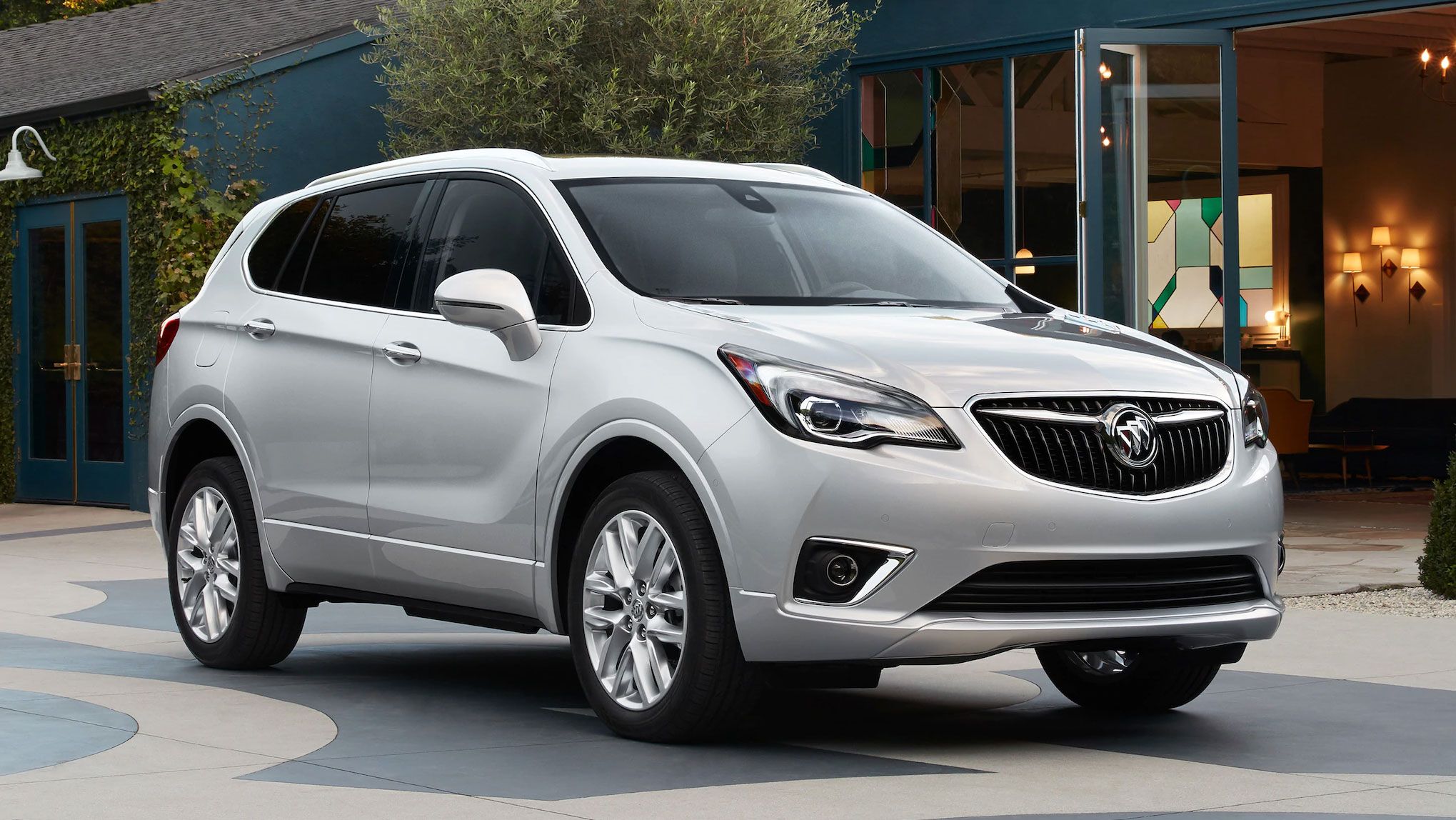
11. **Buick Riviera: Daring Design, Divergent Tastes**The Buick Riviera, especially its distinctive boat-tail models of the early 1970s, is admired by Baby Boomers for its daring design and the luxurious, smooth ride it offered. It was a vehicle that wasn’t afraid to stand out, combining opulent features with unique styling that set it apart from its contemporaries. Boomers cherished the Riviera as a status symbol, a personal luxury coupe that blended powerful V8 engines with an emphasis on comfort and a bold aesthetic, truly capturing a moment in automotive design history.
However, for Millennials, the Riviera’s bold design often registers as “too much” or simply outdated. What Boomers saw as daring and distinctive, younger generations often perceive as ungainly or overly dramatic for their tastes. The sheer size of the vehicle, combined with its inherent fuel inefficiency—a characteristic of many large American cars of its era—presents a significant hurdle for Millennials who are more inclined towards sleeker, more fuel-efficient, and understated designs. The term “gas-guzzler” often comes to mind.
Moreover, the practical considerations of owning an older luxury vehicle, particularly the higher maintenance costs and the challenges of finding specialized parts, further diminish the Riviera’s appeal. While its classic design could potentially attract vintage aesthetic aficionados, the overall package of substantial dimensions, significant fuel consumption, and ongoing upkeep largely deters younger buyers. The Riviera, therefore, serves as a prime example of how even a once-celebrated, daring design can find itself out of step with the evolving aesthetic and practical demands of a new generation.
Car Model Information: 1971 Buick Riviera
Caption: 1963 Buick Riviera
Name: Buick Riviera
Predecessor: Buick Super
Manufacturer: Buick
ModelYears: 1963–1993,1995–1999
Class: Personal luxury car
Categories: 1960s cars, 1970s cars, 1980s cars, 1990s cars, All articles with specifically marked weasel-worded phrases
Summary: The Buick Riviera is a personal luxury car that was marketed by Buick from 1963 to 1999, with the exception of the 1994 model year.
As General Motors’ first entry into the personal luxury car market segment, the Riviera was highly praised by automotive journalists upon its high-profile debut. It was a ground-up design on a new GM E platform debuting for the 1963 model year and was also Buick’s first unique Riviera model.
Unlike its subsequent GM E platform stablemates, the Oldsmobile Toronado and Cadillac Eldorado, the Riviera was initially a front engine/rear-wheel drive platform, switching to front-wheel drive starting with the 1979 model year.
While the early models stayed close to their original form, eight subsequent generations varied substantially in size and styling. A total of 1,127,261 Rivieras were produced.
The Riviera name was resurrected for two concept cars that were displayed at auto shows in 2007 and in 2013.
Get more information about: Buick Riviera
Buying a high-performing used car >>>
Brand: Buick Model: Riviera
Price: $22,499 Mileage: 91,150 mi.
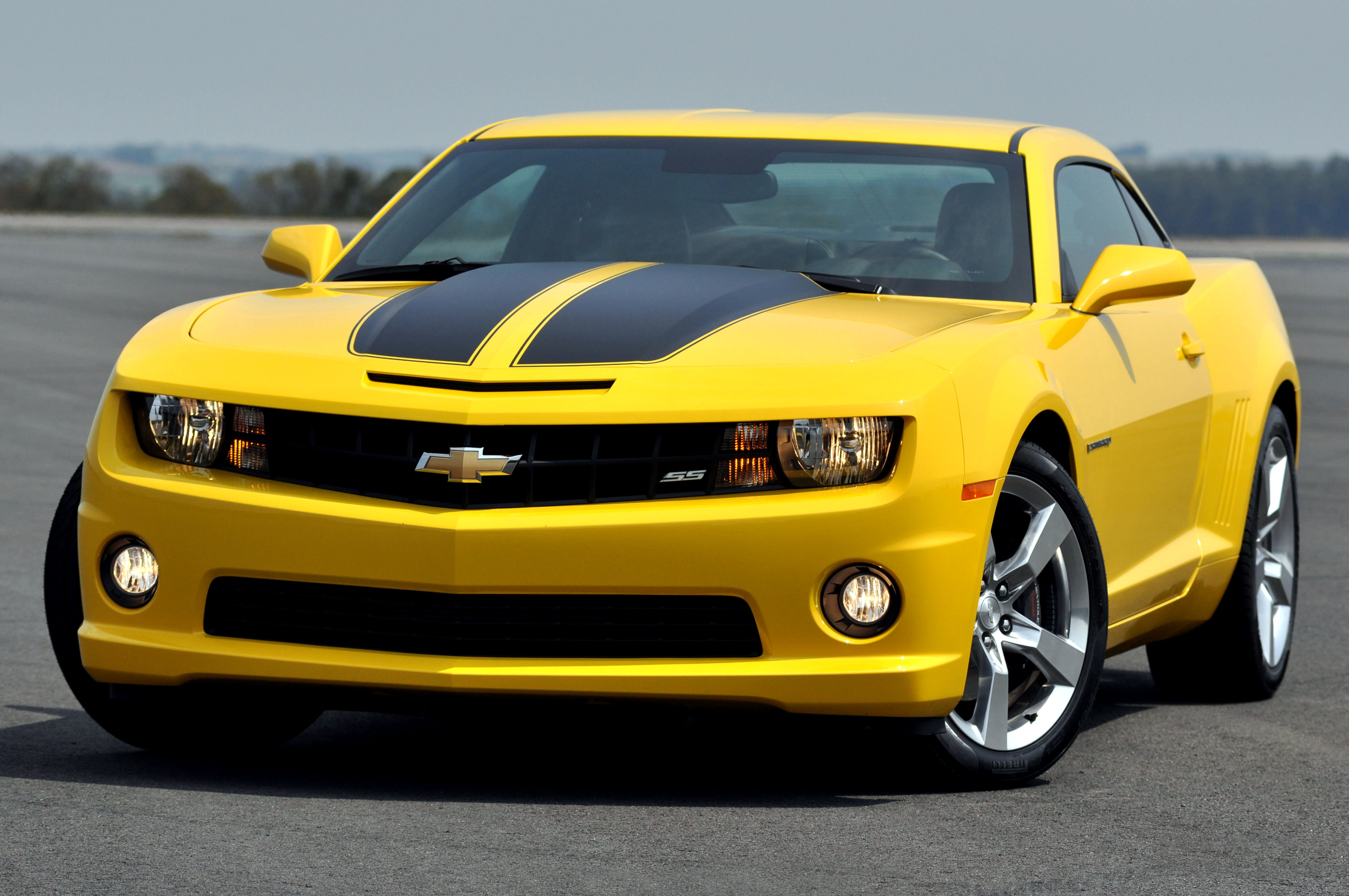
12. **Chevrolet Monte Carlo: Style Over Substance for Millennials**For Baby Boomers, the Chevrolet Monte Carlo, especially from the 1970s and 1980s, was celebrated as a stylish and often affordable luxury coupe, embodying a perfect blend of performance and comfort. With its characteristic long hood and distinctive design, it was a popular choice that offered powerful V8 engine options, making it a personal statement vehicle. Boomers often appreciate its role as an accessible entry into the world of stylish American cruisers, providing a sense of class without breaking the bank.
However, Millennials frequently pass over the Monte Carlo, largely due to its substantial size and perceived lack of dynamic handling. What was once seen as a luxurious and comfortable ride now often feels bulky and cumbersome to a generation that values agility and a more engaging driving experience. The car’s fuel inefficiency, a common trait among vehicles of its era, also presents a significant drawback for younger buyers who prioritize economical and environmentally conscious transportation. The perception that it’s an “old man’s car” further compounds its image problem.
Despite its retro styling, potentially spacious interior, and powerful engine options that might, at first glance, appeal to some, the practical drawbacks of the Monte Carlo ultimately prevail. Its bulky dimensions make it less suited for modern urban life, and its lackluster handling compared to contemporary vehicles means it struggles to meet the driving expectations of younger enthusiasts. The Monte Carlo, despite its storied history, remains a car whose appeal is largely rooted in a bygone era, failing to resonate with the evolving priorities of a new generation.
Car Model Information: 2021 Jeep Grand Cherokee Laredo X
Name: Chevrolet Monte Carlo
Manufacturer: Chevrolet
Production: 1969–1987,1994–2007
ModelYears: 1970–1988,1995–2007
Class: Personal luxury car
BodyStyle: coupé
Layout: FR layout
Caption: 2006 Chevrolet Monte Carlo LS
Categories: 1980s cars, 1990s cars, 2000s cars, All Wikipedia articles written in American English, All articles needing additional references
Summary: The Chevrolet Monte Carlo is a two-door coupe that was manufactured and marketed by the Chevrolet division of General Motors. Deriving its name from the city in Monaco, the Monte Carlo was marketed as the first personal luxury car of the Chevrolet brand. Introduced for the 1970 model year, the model line was produced across six generations through the 2007 model year, with a hiatus from 1989 until 1994. The Monte Carlo was a variant of the Pontiac Grand Prix throughout its production.
From 1970 until 1972, the Monte Carlo rode on the unique “A-Special” platform with the Grand Prix, shifting to the standard A-body intermediate chassis from the 1973 through 1977 model years. For 1978, the Monte Carlo line underwent downsizing, but was still considered a midsized coupe. The rear-wheel drive A-body platform of this generation of Monte Carlo was redesignated as the G-body when GM’s front-wheel drive A-body cars were introduced for the 1982 model year. After an abbreviated 1988 model year, the Monte Carlo was replaced by the two-door Chevrolet Lumina.
For the 1995 model year, the Monte Carlo was revived, replacing the two-door Lumina. It shared the front-wheel drive W-platform with the two-door Grand Prix, and was the largest coupe in the Chevrolet lineup. After the 2002 model year, the Grand Prix coupe was discontinued, the Monte Carlo became the largest two-door model produced by an American auto manufacturer.
In response to declining sales of the model line, Chevrolet discontinued the Monte Carlo after the 2007 model year. During much of its production, the Monte Carlo represented the Chevrolet brand in stock car racing. During the 1980s, the Monte Carlo SS was introduced, featuring aerodynamically enhanced styling; as part of its revival, the Monte Carlo again represented Chevrolet in stock car racing from 1995 through its discontinuation.
Get more information about: Chevrolet Monte Carlo
Buying a high-performing used car >>>
Brand: Chevrolet Model: Monte Carlo
Price: $27,316 Mileage: 34,523 mi.
As we conclude our journey through these classic Boomer-era automobiles, it becomes strikingly clear that the automotive world is not immune to the shifts in generational values and priorities. What once represented the pinnacle of luxury, performance, or practicality for one generation can become a symbol of excess, inefficiency, or outdated design for the next. This fascinating divergence isn’t just about engines and aesthetics; it reflects a broader evolution in how we interact with our world, emphasizing sustainability, advanced technology, and a desire for efficiency that profoundly impacts what we deem desirable in a vehicle. While these cars are undeniably titans of their time, their legacy now offers a compelling lesson in the ever-changing landscape of automotive culture, reminding us that every generation carves its own path through the roads of history, driving towards a future shaped by its unique aspirations and practical demands.

